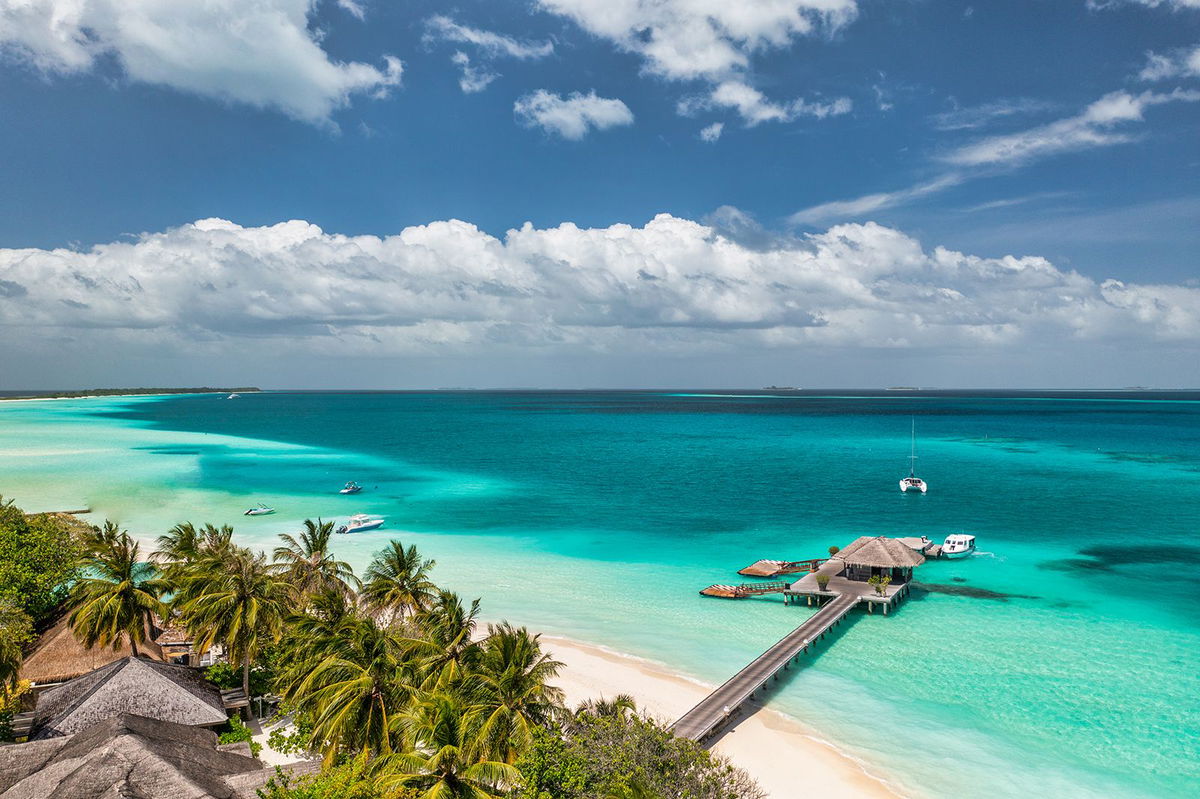Report on Overtourism in the Italian Dolomites and its Implications for Sustainable Development Goals
1. Introduction: The Challenge of Unsustainable Tourism
A recent surge in tourism, largely attributed to social media trends, has created significant environmental and social pressures in the Dolomites mountain range of northern Italy. The influx of visitors, often unprepared for the alpine environment, has led to conflicts with local landowners and raised concerns about the long-term viability of the region’s natural heritage. This situation directly challenges the principles outlined in the United Nations Sustainable Development Goals (SDGs), particularly those concerning environmental protection, sustainable economic growth, and responsible consumption.
2. Impacts on Environmental and Economic Sustainability
2.1. Threats to Natural Heritage and Ecosystems (SDG 11 & SDG 15)
The phenomenon of overtourism in the Dolomites poses a direct threat to the region’s ecological integrity, undermining key targets of the SDGs.
- SDG 11 (Sustainable Cities and Communities): The excessive foot traffic and associated waste generation threaten to degrade the natural and cultural heritage of the Dolomites, a protected area. This is in direct opposition to Target 11.4, which calls for strengthening efforts to protect and safeguard the world’s cultural and natural heritage.
- SDG 15 (Life on Land): The report indicates that tourists are trespassing across private meadows and fragile alpine ecosystems. This behavior jeopardizes the conservation of mountain ecosystems and their biodiversity, which is a core objective of Target 15.4. The litter left behind further contributes to the degradation of terrestrial ecosystems.
2.2. Socio-Economic Tensions and Livelihoods (SDG 8)
The conflict between tourists and local farmers highlights a failure to achieve sustainable tourism models that support local communities.
- SDG 8 (Decent Work and Economic Growth): In response to trespassing and littering on their properties, local farmers have installed turnstiles, charging a 5-euro access fee. This action is described as a “cry for help” from landowners whose livelihoods are impacted. It underscores a breakdown in the implementation of sustainable tourism policies that create value for local communities, as envisioned in Target 8.9.
3. Governance and Management Responses
3.1. Local and Regional Mitigation Efforts
Various stakeholders and authorities have implemented measures to manage the tourist influx, reflecting a reactive approach to achieving sustainability.
- Access Fees: Landowners have instituted fees at popular sites like Seceda and Drei Zinnen. Some stakeholders, such as the president of the Alto Adige Alpine Club, have suggested increasing these fees substantially to deter casual visitors.
- Visitor Management: The Santa Cristina Tourist Board has hired park rangers to ensure tourists remain on designated trails and to enforce rules against drones.
- Transportation and Parking Controls: In the Aosta Valley and Piedmont, authorities have restricted private vehicle access, requiring visitors to use paid shuttle buses or limiting the number of available parking spaces.
- Accommodation Restrictions: The governor of South Tyrol has called for national restrictions to prevent local residents from renting their chalets to tourists, aiming to cap visitor numbers.
3.2. Aligning with SDG 12: Responsible Consumption and Production
A significant issue identified is the lack of awareness and preparedness among tourists, which contradicts the principles of responsible tourism.
- SDG 12 (Responsible Consumption and Production): Reports of tourists arriving in flip-flops and with sun umbrellas, unaware of cable car schedules, highlight a disconnect from sustainable practices. This behavior points to a failure in achieving Target 12.8, which aims to ensure people have the information and awareness for sustainable lifestyles in harmony with nature. The role of “travel influencers” in promoting this type of unprepared tourism is noted as a key driver of the problem.
4. Broader Context: National Ordinances for Sustainable Tourism
4.1. Regulating Tourist Behavior Across Italy
The issues in the Dolomites are part of a wider national trend of implementing new laws to curb the negative impacts of tourism.
- Decorum and Dress Codes: Cities like Diano Marina and the island of Elba have introduced fines for individuals wearing only swimsuits or being bare-chested away from the beach.
- Environmental Protection: On Sardinian beaches, regulations now prohibit smoking, digging large holes, and lying on the sand without a mat to protect the coastline.
- Nuisance Abatement: Municipalities such as San Felice Circeo have banned take-away alcohol, while many regions enforce restrictions on loud music to preserve public peace.
4.2. Progress Towards SDG 16: Peace, Justice, and Strong Institutions
These local and national regulations represent an effort to establish more effective governance frameworks for managing tourism. By setting clear rules and penalties, authorities are attempting to build stronger institutions (SDG 16) capable of balancing tourism with the protection of environmental resources and the well-being of local communities, thereby fostering a more sustainable and peaceful coexistence.
Analysis of Sustainable Development Goals in the Article
1. Which SDGs are addressed or connected to the issues highlighted in the article?
The article on overtourism in the Italian Dolomites touches upon several Sustainable Development Goals (SDGs) by highlighting the conflicts between tourism, environmental protection, and local community well-being. The primary SDGs addressed are:
- SDG 8: Decent Work and Economic Growth: The article discusses tourism as an economic activity but focuses on its negative, unsustainable aspects, which directly relates to the goal of promoting sustainable tourism.
- SDG 11: Sustainable Cities and Communities: The issues of overcrowding, managing public access to natural heritage sites, and the impact on local residents’ quality of life connect to making human settlements inclusive, safe, resilient, and sustainable.
- SDG 12: Responsible Consumption and Production: The core theme of the article is the impact of unsustainable tourism patterns (consumption) and the need for management and policies to ensure sustainability (production of tourism services).
- SDG 15: Life on Land: The article explicitly mentions the need to protect “fragile alpine ecosystems” from the damage caused by large numbers of tourists, directly linking to the goal of protecting terrestrial ecosystems.
2. What specific targets under those SDGs can be identified based on the article’s content?
Based on the issues discussed, the following specific SDG targets can be identified:
- Target 8.9: “By 2030, devise and implement policies to promote sustainable tourism that creates jobs and promotes local culture and products.”
- Explanation: The entire article is a case study of unsustainable tourism. The actions taken by farmers (installing turnstiles), local authorities (hiring rangers, creating parking lots, charging fees), and the provincial governor (calling for restrictions) are all attempts to devise and implement policies to manage tourism and make it more sustainable.
- Target 11.4: “Strengthen efforts to protect and safeguard the world’s cultural and natural heritage.”
- Explanation: The Dolomites are a significant natural heritage site. The article details the threats posed by overtourism, such as tourists “traipsing across private land” and leaving trash. The measures described, like limiting car access and hiring park rangers, are efforts to protect this natural heritage.
- Target 12.b: “Develop and implement tools to monitor sustainable development impacts for sustainable tourism…”
- Explanation: The article describes several tools being implemented to monitor and control the impacts of tourism. These include the “turnstiles” set up by farmers, parking restrictions (“only 150 cars are allowed”), access fees (“40 euros a car”), and the deployment of “four park rangers to ensure that tourists stay on the trails.” These are practical examples of monitoring and management tools.
- Target 15.4: “By 2030, ensure the conservation of mountain ecosystems, including their biodiversity…”
- Explanation: The setting is a mountain ecosystem. The governor of South Tyrol’s call to “set restrictions to protect the fragile alpine ecosystems” directly aligns with this target. The problems of tourists leaving trails and causing environmental degradation are central to the need for conserving this specific mountain environment.
3. Are there any indicators mentioned or implied in the article that can be used to measure progress towards the identified targets?
Yes, the article mentions or implies several quantitative and qualitative indicators that can be used to measure progress:
- Number of daily visitors: The article states that “lines of up to 4,000 people a day” have been seen. A reduction in this number in sensitive areas could indicate progress in managing tourism flows.
- Revenue from access fees: The implementation of fees such as “5 euros” at turnstiles, a “10-euro entrance fee” in Venice, and “40 euros a car” to access Lake Braies are financial indicators of management policies. Tracking this revenue and its use could measure the implementation of sustainable tourism policies (Target 8.9).
- Number of management personnel: The hiring of “four park rangers” is a specific indicator of resources allocated to manage tourist behavior and protect the environment (Target 11.4).
- Access restrictions: The limit of “only 150 cars” allowed to park near Pian del Re is a clear, measurable indicator of policies designed to reduce pressure on ecosystems (Target 15.4).
- Amount of litter: The article mentions that tourists “leave trash” and that the “litter problem isn’t as serious as people say.” The amount of waste collected can be a direct indicator of the environmental impact of tourism and the effectiveness of management strategies.
- Number of ordinances and fines: The introduction of “new ordinances” regarding attire, noise, and alcohol, with fines up to “500-euro,” serves as an indicator of government efforts to regulate tourist behavior and mitigate social impacts.
4. Summary of SDGs, Targets, and Indicators
| SDGs | Targets | Indicators Identified in the Article |
|---|---|---|
| SDG 8: Decent Work and Economic Growth | 8.9: Devise and implement policies to promote sustainable tourism. |
|
| SDG 11: Sustainable Cities and Communities | 11.4: Strengthen efforts to protect and safeguard the world’s cultural and natural heritage. |
|
| SDG 12: Responsible Consumption and Production | 12.b: Develop and implement tools to monitor sustainable development impacts for sustainable tourism. |
|
| SDG 15: Life on Land | 15.4: Ensure the conservation of mountain ecosystems. |
|
Source: cnn.com







